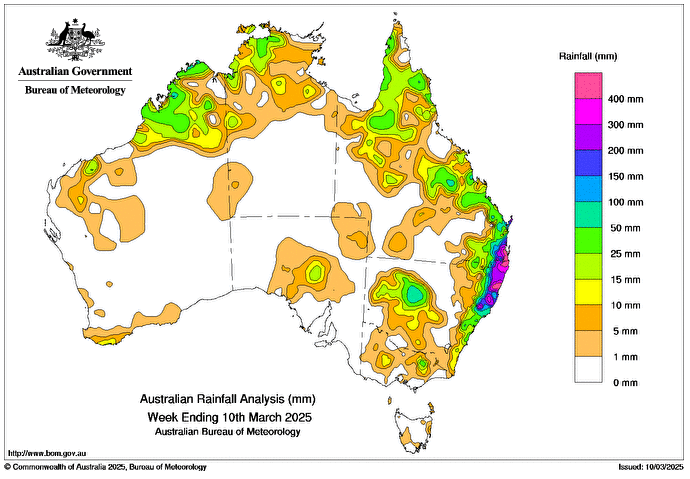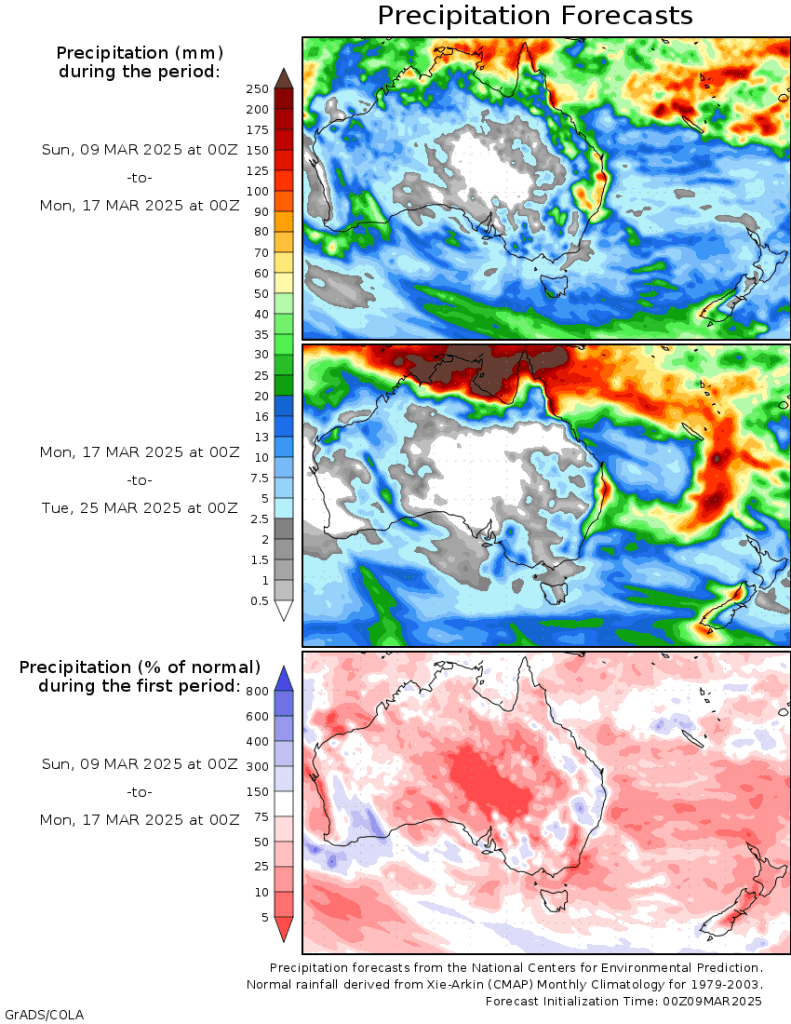TROPICAL Cyclone Alfred brought widespread heavy to intense rainfall from 5 March across south-eastern Queensland and north-eastern New South Wales, before and after making landfall north of Brisbane late on 8 March.
Persistent low-pressure troughs extending across the interior, triggered storms and scattered rainfall over northern Australia.
Cold fronts and associated troughs brought scattered showers and isolated storms to southern areas of Western Australia, central South Australia, central regions of Victoria and western Tasmania.
Weekly rainfall totals greater than 100 mm were recorded in across large regions between Queensland’s south-east and north-eastern New South Wales, with totals greater than 400 mm in parts of the Northern Rivers and Mid North coast districts of New South Wales and Queensland’s South East Coast, and Wide Bay and Burnett districts.
Major flooding occurred along several rivers in south-eastern Queensland and north-eastern New South Wales.
Weekly rainfall totals of 50 to 100 mm were recorded in isolated regions of the Kimberley district of Western Australia, central and south-east Queensland coasts, and central and north-east parts of New South Wales.
Weekly rainfall totals of 25 to 50 mm were recorded in regions of eastern and central New South Wales, isolated northern regions of Queensland and the state’s central and south coasts, north-western parts of the Northern Territory, large regions of the Kimberley district of Western Australia and an isolated region in north-east Victoria.
The highest weekly total (at a Bureau gauge) to 9am on 10 March was 1329.0 mm at Springbrook Road in Queensland.
The highest daily total (at a Bureau gauge) was 427.3 mm at K’Gari Eurong in Queensland in the 24 hours to 9 am on 9 March.



HAVE YOUR SAY